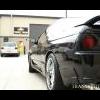Healthy Compression For Rb26dett ?
Announcements
-
Similar Content
-
Latest Posts
-
I might buy a new scope actually in the morning, mine has gone a bit cloudy so was kinda useless especially as I couldn't get it in there. Might be a good first step actually.
-
By TurboTapin · Posted
I wasn't aware the GKTech bushings changed the placement of the subframe. What improvements did you see? -
I did that today. I couldn't get the scope in there but I could get a good look with a torch. There was heaps of shit on the walls of the sensor hole that I cleaned as best I could but I couldn't see any damage or anything untoward. 😞
-
Jack the back of the car up, pull that wheel off, pull that sensor out, and put a bore scope into the hole to inspect the outer casing, see if anything looks damaged before you pull the whole thing apart.
-
Ergh... So I pulled the speed sensor out again and the tip was shiny so I think it's rubbing the bearing. The bearing contains the magnets for the speed sensor so I think when the first sensor broke it damaged the magnet ring on the bearing. This is just a Google image, but there is a hole going to the bearing. So when the tip broke off the old sensor I'm guessing it fouled the bearing... As the magnet is only protected by a plastic cover it would be easy to damage it. So I guess I'm doing a bearing again.
-








Recommended Posts
Create an account or sign in to comment
You need to be a member in order to leave a comment
Create an account
Sign up for a new account in our community. It's easy!
Register a new accountSign in
Already have an account? Sign in here.
Sign In Now